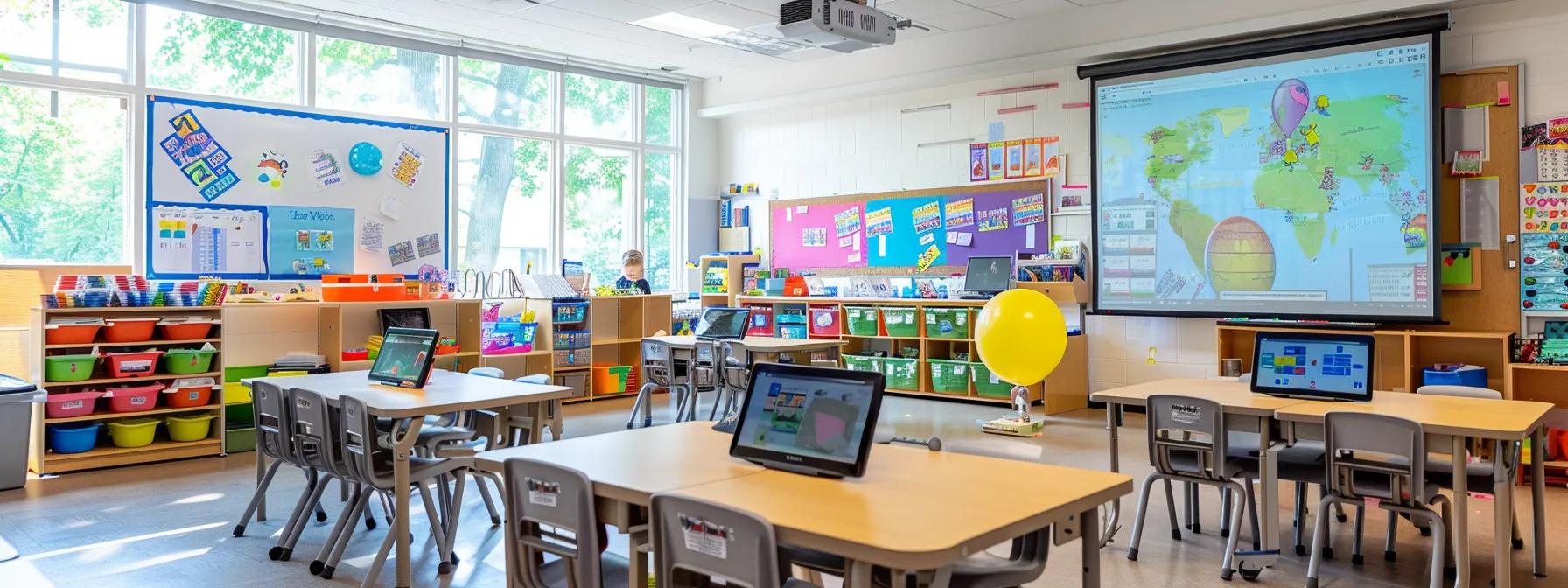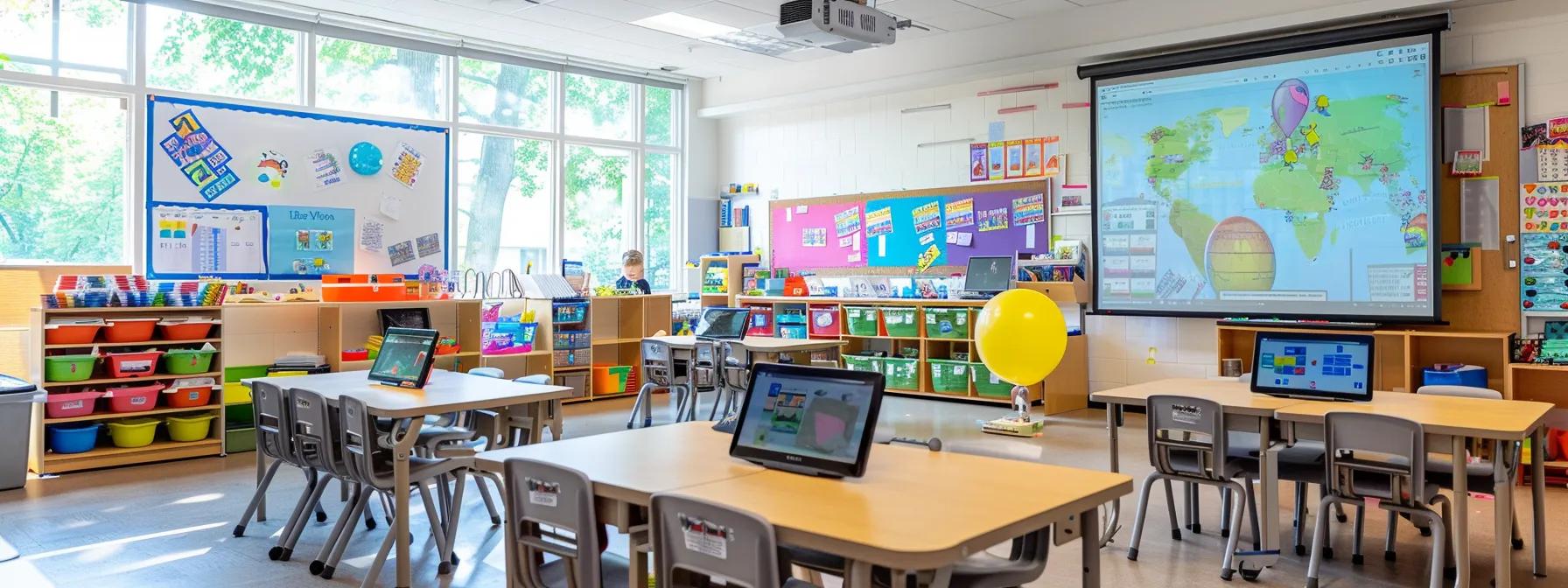
Benefits of AI Lesson Plan Creators in Early Childhood Education

Benefits of AI Lesson Plan Creators in Early Childhood Education
What Are AI Lesson Plan Creators and How Do They Work in Early Childhood Education?
AI lesson plan creators refer to software tools powered by artificial intelligence designed to assist educators in developing structured and well-tailored lesson plans, specifically for early childhood education. These tools leverage machine learning algorithms to analyze curriculum standards, educational theories, and classroom dynamics, in order to generate lesson plans that are both innovative and tailored to the developmental needs of young learners.
Through the integration of a variety of data points such as student performance metrics, historical academic data, and curriculum guidelines, these AI systems are capable of identifying trends that can help educators plan lessons that are not only engaging but also highly effective. For instance, the software may recommend activities that support critical thinking, sensory development, or collaborative play, based on the prescribed educational outcomes.
Moreover, the working mechanism of these tools typically involves natural language processing (NLP) to understand educators’ input—ranging from subject focus to specific learning objectives—and to produce coherent and contextually relevant lesson structures. By automating routine tasks such as aligning learning objectives with assessment criteria or suggesting multimedia resources, these systems improve efficiency and allow teachers to dedicate more time to student interaction and individualized instruction.
This modern approach to lesson planning represents a confluence of traditional educational strategies and advanced technology, ensuring that every lesson plan not only adheres to necessary standards but is also dynamically enriched with the latest pedagogical insights.
What Are the Key Benefits of Using AI Tools for Teachers in Early Childhood Education?
The integration of AI in early childhood lesson planning comes with a wide array of benefits for teachers, ranging from increased efficiency to enhanced educational outcomes. One of the primary advantages is the ability to streamline the planning process. By automating repetitive and time-consuming tasks such as curriculum alignment and resource integration, teachers can devote their time to more critical aspects of teaching like interactive sessions and individualized student support.
Another significant benefit is the potential for personalization. AI-driven tools are capable of analyzing a variety of classroom data, which allows them to suggest modifications to lesson plans tailored to the specific needs of a given class or even individual students. Personalized lesson plans can lead to improved student engagement and better absorption of information, as they address the varying learning paces and styles found within a typical early childhood classroom.
Furthermore, these tools contribute to consistency and adherence to state or national educational standards. In a typical classroom environment, ensuring each lesson meets these standards can be challenging, but AI aids by cross-referencing each lesson component with educational benchmarks. This not only guarantees quality and consistency but also aids in compliance during evaluations and inspections.
Additionally, AI tools can provide educators with suggestions for incorporating a diverse range of educational materials, from digital resources to hands-on learning activities. For example, a teacher might receive recommendations to integrate interactive storytelling or sensory play, depending on the day’s learning objectives. Such diversity in teaching methodologies makes the learning process more engaging and supportive of multidimensional development in early learners.
Ultimately, the practical benefits of these tools include not only a reduction in teacher workload but also an improvement in the overall quality of education delivered. The data-driven insights provided by AI systems empower educators to continuously refine their teaching strategies in line with evolving pedagogical research and classroom realities.
What Features Should You Look for in Lesson Planning Software for Preschool?
When evaluating lesson planning software, especially for preschools, it is crucial to consider a range of features that ensure both usability and relevance to early childhood educational needs. First and foremost, the software should have an intuitive interface that allows educators to navigate through planning modules effortlessly. An intuitive user experience reduces the learning curve and makes it easier for teachers to integrate the software into their daily routines without feeling overwhelmed by technical complexities.
Another key feature is the capability for adaptive content generation. The best systems allow for tailored lesson plans based on factors such as the age group of students, current skill levels, and specific learning objectives. The adaptive feature ensures that the software can provide a variety of instructional ideas, from structured academic activities to more open-ended, play-based learning opportunities.
Integration with existing educational resources is also an indispensable feature. This means that the lesson planning software should be able to pull from a vast library of multimedia resources, printable materials, and interactive digital content. This library should be regularly updated and provide educators with contemporary, research-based instructional strategies that align with early childhood education research.
Additionally, robust analytics and feedback features are crucial. These features allow educators to review the effectiveness of past lesson plans, assess student engagement levels, and make data-driven adjustments for future sessions. For example, if a particular interactive activity yielded notable gains in student engagement, the software should record this success and possibly recommend similar activities for future lessons.
The ability to customize and modify generated lesson plans is another important feature. While automation is a key strength of these AI tools, the option for educators to manually adjust, add, or remove content ensures that the lesson plans maintain a personal touch tuned to the unique dynamics of each classroom. The blend of automation and manual customization provides a balanced approach that leverages both technological efficiency and human intuition.
Lastly, compatibility with mobile devices and cloud-based platforms improves accessibility, allowing teachers to update, view, and adjust lesson plans from virtually anywhere. This flexibility enables educational continuity, even in cases where remote learning is required, and ensures that teachers can access the software in both classroom and home environments.
How Can Educators Integrate AI Lesson Planning Into Their Preschool Curriculum?
Educators looking to integrate AI lesson planning into their preschool curriculum should first undergo a thorough orientation with the new system. Training sessions, either provided by the software vendor or conducted in-house, help teachers understand the full capacity and potential of the AI tools at their disposal. Familiarity with the software’s functions empowers educators to make informed decisions about how best to incorporate its features into their established teaching practices.
Integration begins with aligning the AI-generated lesson plans with the existing curriculum. Educators should ensure that the key learning objectives and standards defined by their school or educational authority are met within the framework provided by the AI tool. This typically involves a review process where the teacher assesses AI suggestions and customizes them to meet the nuanced requirements of their classroom demographics.
A gradual integration strategy is advisable. Teachers might start by using the AI tool for one subject area or one particular unit before extending its usage to the entire curriculum. This phased approach allows for adjustment based on feedback and measurable outcomes, providing a controlled environment in which to evaluate the software's impact.
Another critical aspect of integration is collaboration among teaching staff. Peer discussions and shared experiences can reveal best practices and innovative ways to use AI in lesson planning. Often, schools create dedicated professional learning communities (PLCs) where teachers meet regularly to discuss challenges, successes, and potential improvements in their use of AI-enhanced curriculum planning.
Moreover, a close monitoring process should be established where both educators and administrators regularly review the performance of AI-generated lesson plans against student learning outcomes. This could involve routine classroom observations, assessments, and feedback from both students and parents. The collected data then informs iterative improvements in the integration process, ensuring that the technology continually evolves to serve educational needs more effectively.
Additionally, educators can use AI tools to explore interdisciplinary approaches, integrating elements from science, technology, arts, and physical education into comprehensive lesson plans. A multidisciplinary approach not only enriches the curriculum but also encourages holistic development among preschoolers, nurturing both cognitive and social skills.
What Are Real-World Examples and Case Studies of AI Transforming Early Childhood Education?
There are several examples and case studies that illustrate how AI is transforming early childhood education, even if these examples remain hypothetical in many instances. In some schools, educators have reported considerable time savings and more dynamic lesson planning thanks to AI tools that automate routine tasks such as schedule synchronization and content sourcing. For instance, within a controlled pilot program, one preschool integrated an AI lesson planning tool and observed an increase in parental engagement as teachers could provide richer, more varied content during classroom sessions.
Another illustrative case is where AI was employed to analyze learning patterns among preschool students. By examining data on attention spans, participation levels, and learning progression, the system was able to highlight activities that resonated best with young learners. Educators used these insights to adjust the pacing and content of lessons, resulting in an observable improvement in student enthusiasm and retention of knowledge.
In another scenario, an AI tool enabled a preschool to introduce more culturally responsive teaching methodologies. The AI system helped coordinate resources that reflected diverse cultural narratives, thereby enriching the curriculum and fostering an inclusive classroom environment. Teachers reported that the diversified content led to more meaningful classroom discussions and helped build a stronger sense of community among students.
Case studies collected from various educational institutions have highlighted that AI’s integration into lesson planning not only optimizes teaching methods but also encourages innovative classroom practices. While the outcomes vary depending on implementation quality and teacher readiness, the overall trend indicates that such technological support can drive significant improvements in educational strategies and student performance.
These real-world examples underscore the importance of adopting AI solutions in modern education settings, showcasing potential benefits such as improved curricular alignment, enhanced personalization, and more effective use of teachers’ time. As pilot projects continue to emerge, the education community eagerly anticipates a broader deployment of these tools, supported by ongoing research and development in the field of AI-based education.
What Is the Future of AI in Early Childhood Education and Lesson Planning?
The future of AI in early childhood education appears promising, with rapid advancements continuously reshaping how educators approach lesson planning and classroom engagement. In the years ahead, AI tools are expected to become even more sophisticated, providing deeper insights through enhanced analytics, behavioral tracking, and real-time feedback mechanisms. These improvements will help create increasingly personalized learning environments where each child’s educational trajectory is meticulously supported.
One potential future development is the integration of augmented reality (AR) and virtual reality (VR) components into AI lesson planning tools. Combining these immersive technologies with intelligent data analysis could allow for the creation of virtual classrooms or scenarios that enrich traditional teaching methods. For example, a lesson plan might include interactive AR elements that bring stories or scientific concepts to life, making abstract ideas more tangible for young learners.
Another area of growth is the incorporation of multi-language support and cultural adaptability in AI systems. As classrooms become more diverse, AI lesson planning tools may integrate advanced language processing capabilities that allow educators to generate bilingual or multilingual content seamlessly. This development not only supports language minority students but also enriches the learning experience for all students by introducing them to multiple cultural perspectives from an early age.
Furthermore, future AI systems could offer even greater collaboration features, connecting educators across schools, districts, and even countries. Such networking capabilities would facilitate the sharing of best practices, lesson plan ideas, and innovative teaching strategies on a global scale. In this interconnected ecosystem, educators would benefit from a constantly updating repository of educational content driven by collective wisdom and data insights from diverse learning environments.
Ethical considerations and data privacy will naturally remain at the forefront of AI development in education. Future iterations of AI lesson planning tools will likely incorporate robust safeguards to protect student data while ensuring transparency about the methods used to generate recommendations. These efforts will help build trust among educators, parents, and policymakers, driving broader adoption of the technology.
Overall, the advancements anticipated in AI lesson planning are set to provide a more adaptive, innovative, and responsive educational framework. As these technologies mature, they may redefine the role of the teacher from a sole knowledge provider to a facilitator and guide within a technologically enriched, student-centered learning ecosystem.
What Are the Most Common Questions About AI Lesson Plan Creators in Early Childhood Education?
Educators, administrators, and even parents often have several common questions regarding the use and effectiveness of AI lesson plan creators in early childhood settings. One frequently asked question is about the accuracy of the AI recommendations. Many wonder whether automated systems can truly reflect the nuances of early childhood development. Industry experts suggest that while these tools are highly advanced, the role of human oversight remains critical in ensuring that the final lesson plan is both developmentally appropriate and pedagogically sound.
Another common concern relates to data privacy and security. Given that AI tools often collect and analyze classroom data, questions about who has access to this information and how it is stored are paramount. Reputable software providers emphasize strong data encryption, compliance with educational privacy laws, and transparent data handling policies to address these concerns.
Teachers are also curious about the ease of integration with existing classroom management systems. Most modern AI lesson planning tools are designed to be compatible with popular digital platforms and learning management systems (LMS), which simplifies the process of merging traditional teaching methods with innovative technological solutions. Educators have found that with proper training and initial setup, these tools integrate relatively smoothly with daily instructional routines.
Another frequently raised question concerns the cost-effectiveness of AI tools. While initial investments can be significant, many school districts report that the long-term benefits—increased efficiency, improved student engagement, and enhanced curriculum quality—justify the expense. In many cases, grant programs or district funding initiatives help offset the initial costs, allowing even resource-limited institutions to explore the benefits of AI-assisted lesson planning.
Finally, parents often ask about the impact of AI-generated lesson plans on their children’s learning experience. In response, educators note that these tools are designed to complement, not replace, traditional teaching methods. By shouldering administrative burdens and providing well-researched lesson recommendations, AI helps teachers focus more on individual student interactions. This balance promises a more enriched and personalized educational experience, ultimately benefiting the overall learning environment.
